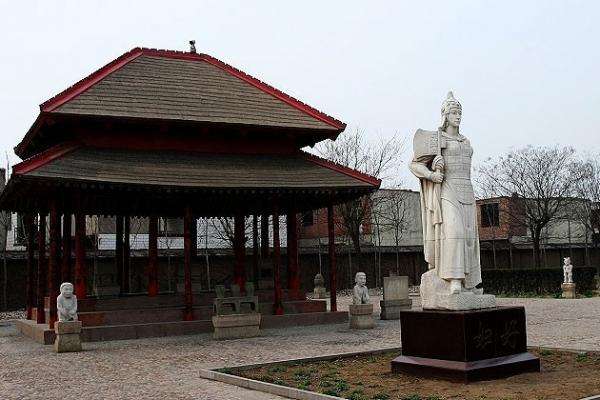Bygone Glory in the Capital Site of the Shang Dynasty
3 min readThe capital was the sacred place for the monarch, so it was no wonder that the king in each reign would go all out to build up the possibly most impressive capital so as to accentuate his dignity, secure his throne and lord it over the whole kingdom. The capital in the Shang dynasty,a large city dominated by palatial buildings, was the political, economic and cultural center. The four capitals of the Shang dynasty excavated so far are located respectively at the Erlitou site of Yanshi, the Shang city at Shixiang valley of Yanshi, the Shang city in Zhengzhou and Yinxu of Anyang.
The Yinxu site of Anyang sheds light on the end of the Shang dynasty as well as the peak of architecture of the whole Shang dynasty. The site is located on the banks of the Yellow River in the northwest of Anyang in Henan province and dated between then end of the 14th century and the 1lth century BC It went through 12 reigns for 273 years ever since Pangeng relocated the capital to Yin and King Zhou committed suicide in fire.

The site coverage is 30 square kilometers. On the southern bank of the Huanhe River around the Xiaotun village’s palace and temple complex are scattered mills, common people’s living quarters, cemeteries, etc; in the north of the Xiaotun village is the site of the imperial jade ware mill. In the mil1’s neighborhood there is a trench winding its way from the southwest to the northeast for 750 meters, which used to be a defense structure. The bronze-making sites are located at Miaopu, Xuejiazhuang and Limintun. The bone ware mills’ sites are in the south of Beixinzhuang and the Dasikong village. At Houjiazhuang 13 mausoleums of the kings inthe Shang dynasty have been found and many slaves and animals had been buried alive with them.1,400-odd caves where the human bodies were sacrificed have been excavated and the Shang imperial family offered these sacrifices to their ancestors.
The imperial palace complex at Yinxu was built on a relatively high terrain. Inthe construction of the complex, sorts of religious ceremonies were held. On the occasions of laying the cornerstone, installing the door or gate, sacrifices had to be made by killing slaves, cattle, sheep and dogs, so the mud holes where human bodies or animals had been buried were frequently discovered at the palace’s base while beside the palace gates had been interred the guards holding arms in hand. The hieroglyphs of the great buildings, such as the oracle characters meaning high or impressive city walls give clues of the grandeur and magnificence of the palatial buildings at Yinxu. The bronze pillars and exquisitely engraved marble pieces all indicate that there was quite an art in constructing the palace complex. The engraved beams and painted pillars appear splendid and imposing. The base of th palatial buildings had been rammed time and time again and some of the buildings stood on the multi-level terrain dozens of centimeters above the ground. The elevated buildings not only were moisture-resistant, well-ventilated and water-proof, but also played an important defending role. Furthermore they asserted the ruler’s absolute majesty.

Around the palatial complex at Yinxu are the crowded living quarters and cemeteries including those of the lower class free men and the slaves. Among the thousands of small tombs excavated so far a lot of cultural relics dating fromthe Shang dynasty have been unearthed.
In a word the capital in the Shang dynasty was an impressive city densely populated. The palace complex including the ancestral temple of the ruling family constituted the capital’s center. There were large-scale specialized mills; there lived many vassals, aristocrats, common people, slaves, and also stationed troops.

The capital,a large city serving as the political, military, economic and cultural center, was the very symbol of the prosperous phase of the slave society in Chinese history.








